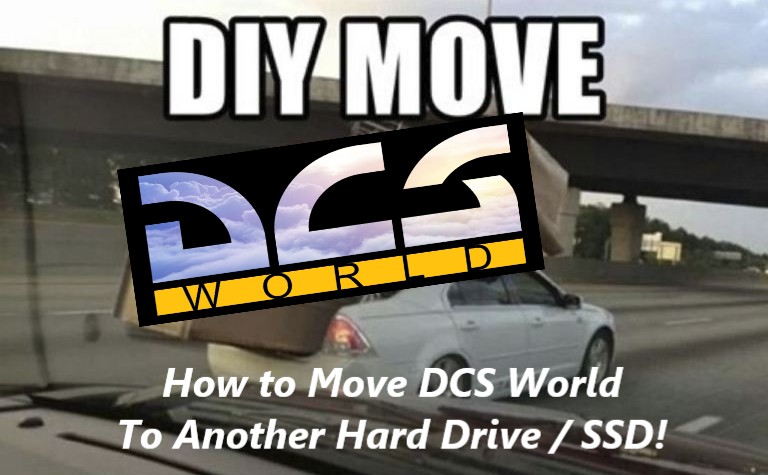The Loyal Wingman: The Rise of Unmanned Combat Wingmen.
The concept of a Loyal Wingman is revolutionizing military aviation, introducing unmanned aerial vehicles (UAVs) designed to fly alongside manned aircraft. These systems aim to provide support, enhance survivability, and increase the firepower of manned platforms—all while reducing risks to human pilots.

Multiple countries are actively developing Loyal Wingman programs, each with unique designs and roles tailored to their strategic needs. Let’s explore the current state of these projects, their intended uses, and what they mean for the future of aerial combat.
What Is a Loyal Wingman?
The Loyal Wingman is essentially an unmanned combat aerial vehicle (UCAV) designed to act as a companion to manned aircraft, often controlled by a pilot in a fighter jet. The Loyal Wingman is not just a drone; it’s a highly autonomous platform capable of:
- Augmenting combat power with additional weapons or sensors.
- Performing high-risk missions, such as Suppression of Enemy Air Defenses (SEAD).
- Extending sensor range by acting as a forward scout.
- Providing a layer of protection by drawing enemy fire or jamming radar systems.
Unlike traditional UAVs, Loyal Wingmen are designed for dynamic battlefield integration, capable of working seamlessly with their human counterparts.
- Joystick / HOTAS – AMAZON.com
- Rudder Pedals – AMAZON.com
- Throttle Quadrant – AMAZON.com
- Gaming Chair – AMAZON.com
- VR Headset – AMAZON.com
Key Players in the Loyal Wingman Race
United States:
Programs:
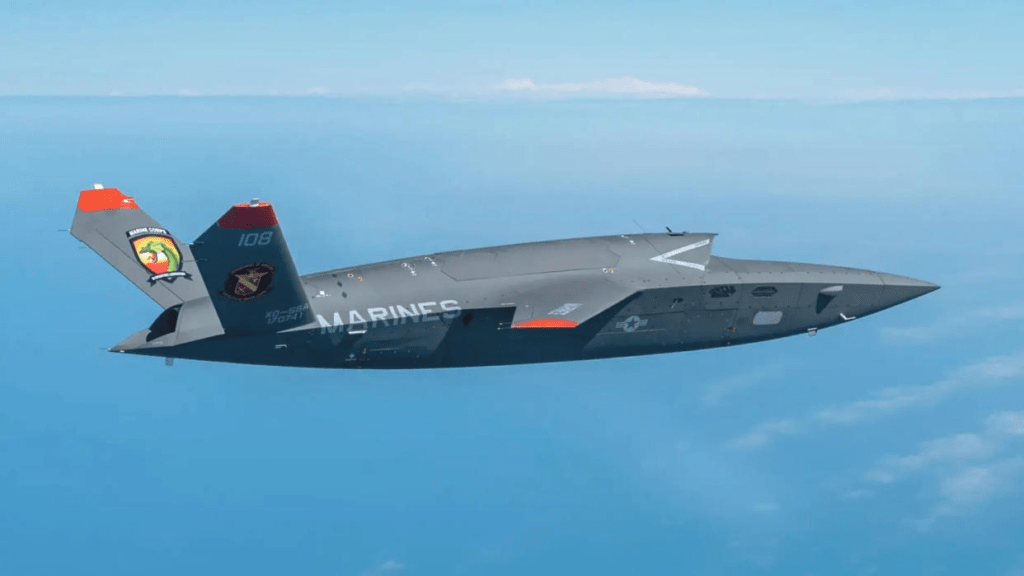
- Kratos XQ-58A Valkyrie:
Developed under the Low-Cost Attritable Aircraft Technology (LCAAT) program, the XQ-58A Valkyrie is one of the most prominent Loyal Wingman projects. - Specs:
- Speed: ~Mach 0.85
- Range: 2,500 miles
- Payload: Modular bays for sensors, weapons, or electronic warfare equipment.
- Role:
The Valkyrie is designed to be a force multiplier, supporting F-35 and F-22 aircraft in contested environments. Its stealthy design and affordability make it expendable if needed. - Autonomy:
Semi-autonomous with man-in-the-loop capabilities. - Skyborg Program:
This ambitious program aims to create a fully autonomous AI system capable of operating Loyal Wingman platforms. The Skyborg Autonomous Core System (ACS) could eventually control multiple UAVs without direct pilot oversight.
Russia:
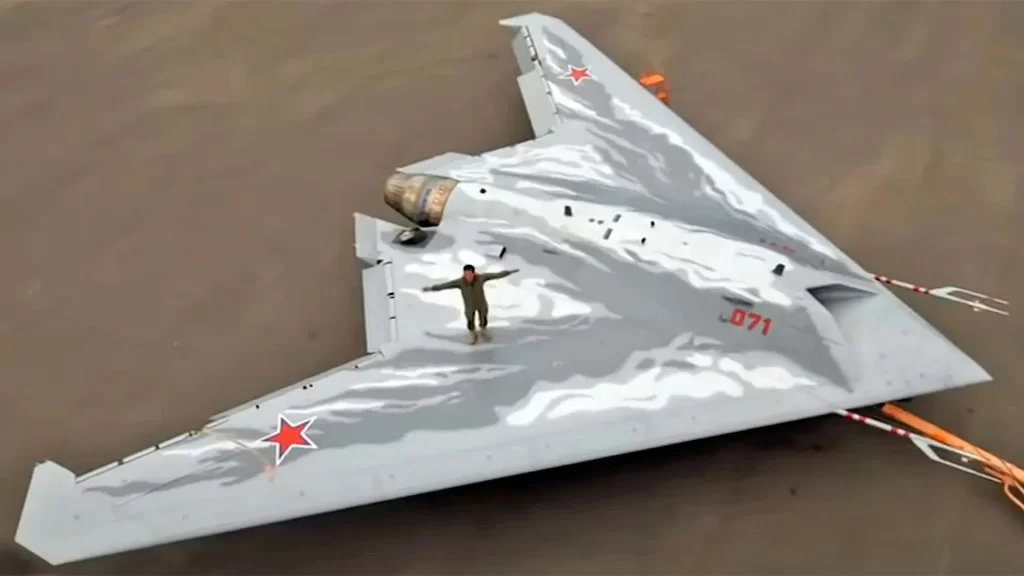
- S-70 Okhotnik-B (Hunter-B):
Russia’s Loyal Wingman project is designed to operate alongside the Su-57 Felon, complementing its stealth and firepower. - Specs:
- Speed: ~1,000 km/h (~620 mph)
- Range: 6,000 km (3,728 miles)
- Payload: Up to 2,000 kg of weapons, including air-to-air and air-to-surface missiles.
- Role:
Designed for stealthy reconnaissance and combat missions, the S-70 can also function independently if needed. - Autonomy:
While Russia has touted significant AI capabilities, most analysts believe the Okhotnik-B relies on a combination of remote piloting and basic autonomy.
China:
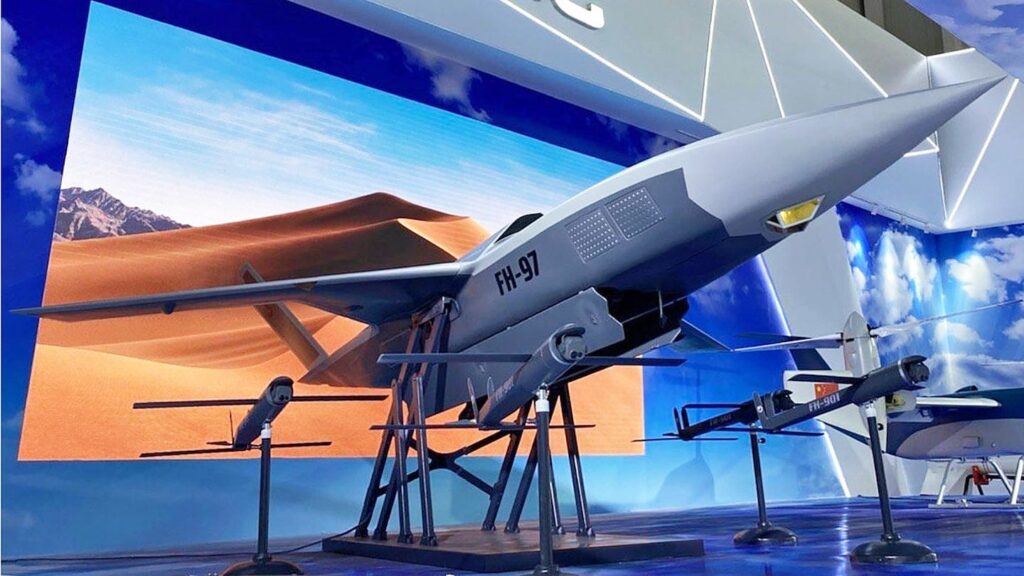
- Feihong FH-97:
Unveiled at the Zhuhai Airshow 2021, the FH-97 appears to be a Loyal Wingman concept similar to the Valkyrie. - Features:
- AI-driven capabilities for autonomous operations.
- Swarming capabilities to overwhelm enemy defenses.
- Modular payload bays for multi-role adaptability.
- Wing Loong-10:
Another drone showcased as a potential Loyal Wingman, featuring advanced electronic warfare systems and modular weapons bays.
Australia:
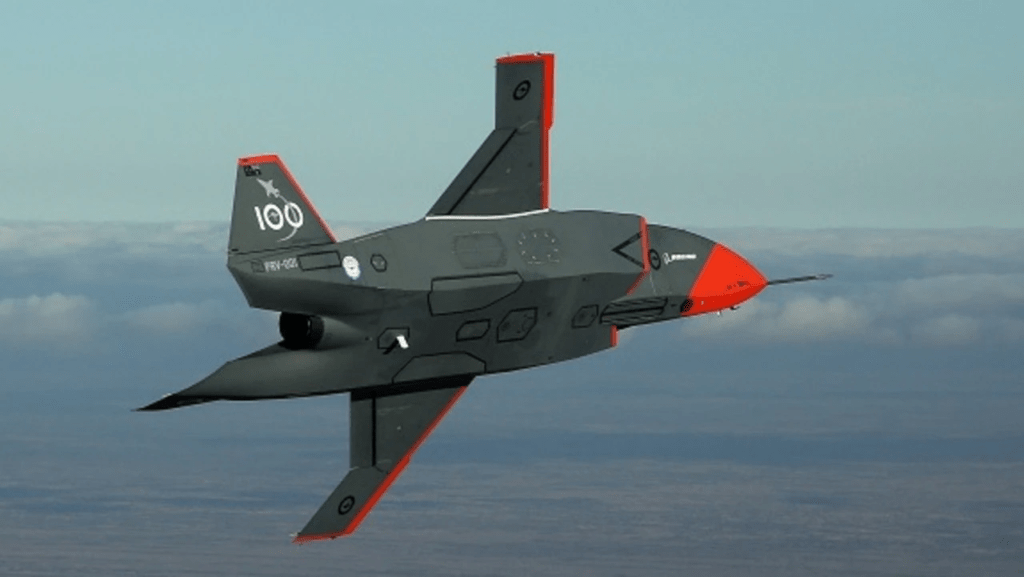
- MQ-28 Ghost Bat (formerly Loyal Wingman):
Developed by Boeing Australia, the Ghost Bat is a standout program in the Loyal Wingman space. It has already conducted successful test flights and is designed to operate with Australia’s F-35 fleet. - Specs:
- Speed: Subsonic
- Range: ~2,000 miles
- Payload: Customizable for sensors, weapons, or jamming equipment.
- Role:
Designed for surveillance, reconnaissance, and combat support, the Ghost Bat exemplifies modularity and cost-efficiency.
Capabilities and Features of Loyal Wingmen
Stealth and Survivability
Most Loyal Wingmen leverage stealth technology to operate undetected. Their small size, radar-absorbing materials, and low infrared signatures make them ideal for entering contested airspace.
AI and Autonomy
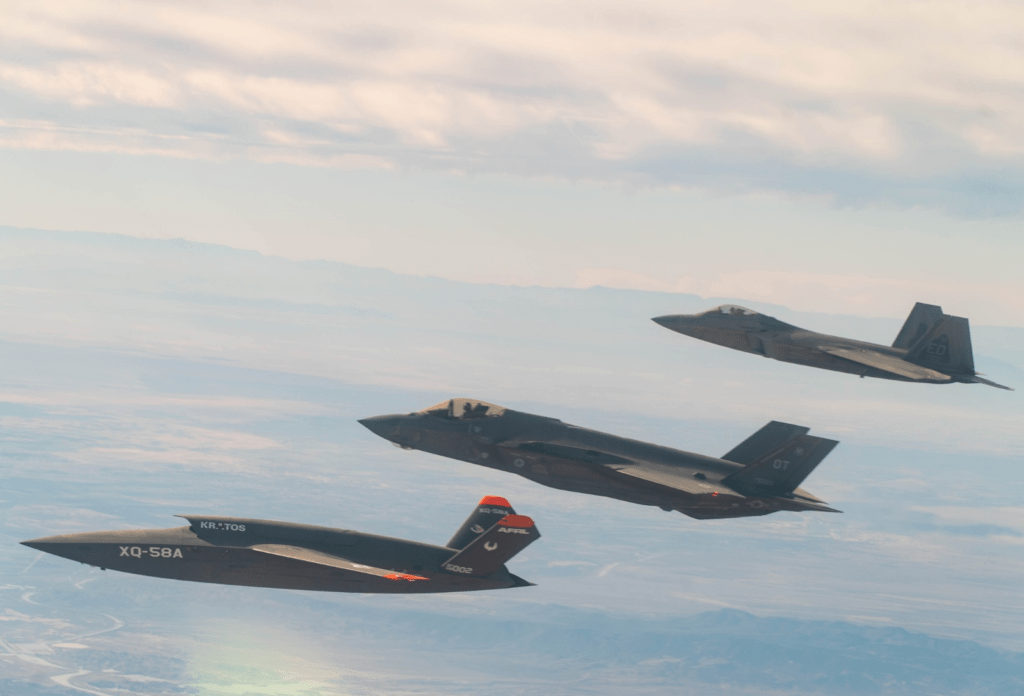
While many systems rely on human pilots for mission commands, advanced AI algorithms enable Loyal Wingmen to:
- Coordinate with manned aircraft dynamically.
- Execute missions autonomously in GPS-denied environments.
- React to battlefield changes in real-time without constant input.
Weaponry
Loyal Wingmen are capable of carrying a variety of armaments:
- Air-to-air missiles: For engaging enemy aircraft.
- Air-to-ground munitions: Including precision-guided bombs and SEAD weapons.
- Electronic warfare pods: For jamming or disrupting enemy defenses.
Swarm Capabilities
One of the most promising features is the ability to operate in swarms, where multiple Loyal Wingmen work together to achieve mission objectives, such as overwhelming enemy radar systems or defending a manned fighter from threats.
The Future: Man-in-the-Loop or Fully Autonomous?
Man-in-the-Loop Control
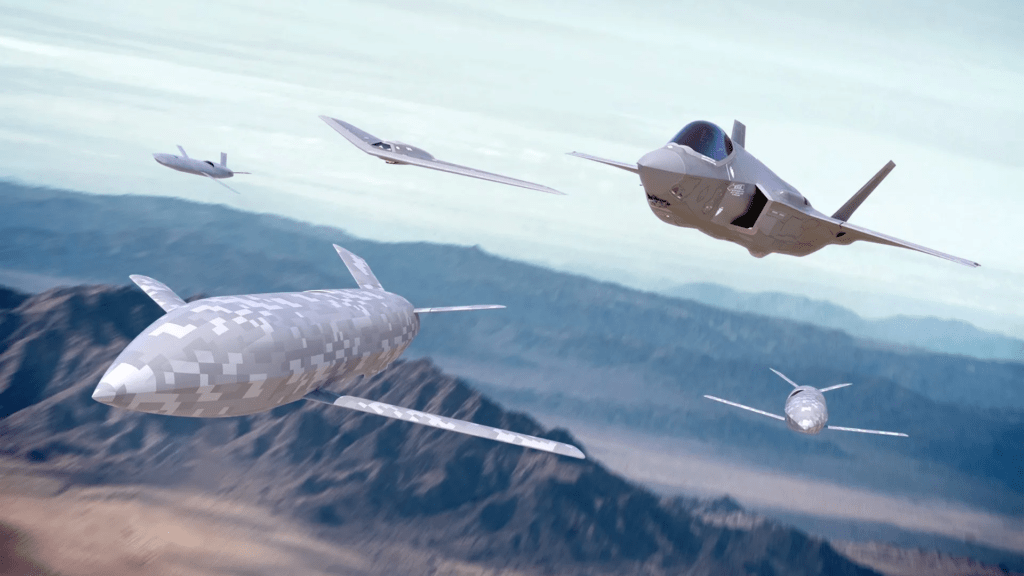
Currently, most Loyal Wingman platforms rely on man-in-the-loop operations, where a pilot issues commands. This ensures human oversight in critical decisions like target selection and weapon release.
AI-Driven Autonomy
The long-term goal for many programs is to achieve full autonomy, where drones can complete missions without direct human control.
- Advantages:
- Faster decision-making.
- Reduced reliance on communication links that could be jammed.
- Challenges:
- Ethical concerns about AI making lethal decisions.
- Technical hurdles in creating reliable autonomous systems.
How Will Loyal Wingmen Be Used?

High-Risk Missions
Loyal Wingmen can perform missions too dangerous for manned aircraft, such as:
- Penetrating contested airspace to locate and destroy air defenses.
- Acting as decoys to draw enemy fire away from manned fighters.
Force Multiplication
By extending sensor ranges and carrying additional weapons, Loyal Wingmen multiply the combat power of a single manned aircraft.
Expanding Air Combat Roles
In future conflicts, Loyal Wingmen could take on diverse roles:
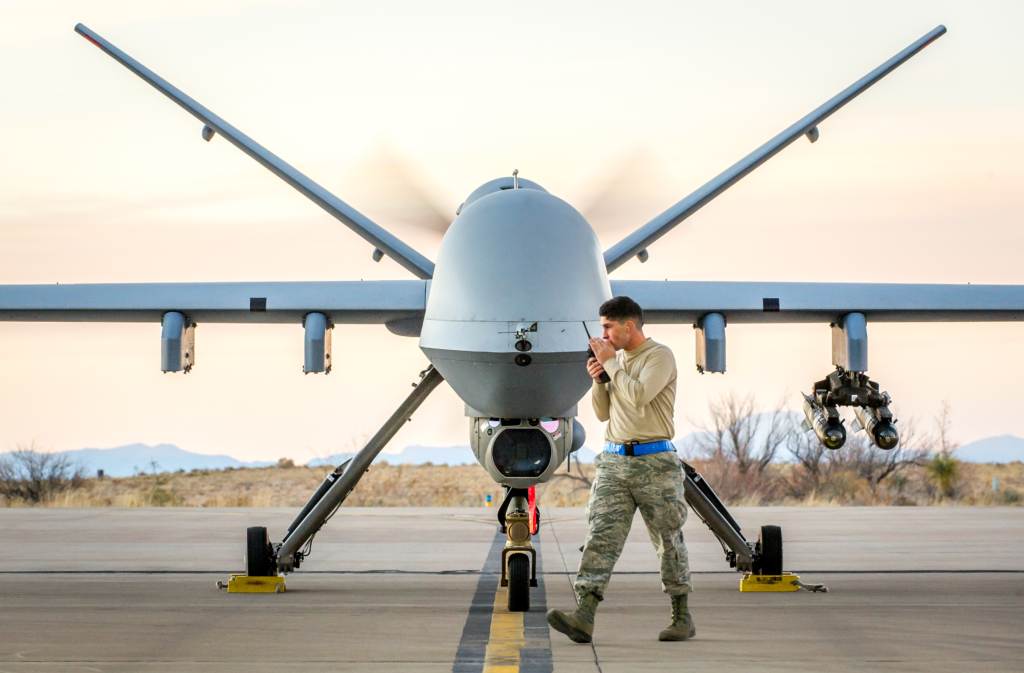
- ISR (Intelligence, Surveillance, and Reconnaissance).
- Electronic warfare and cyber operations.
- Aerial refueling for manned fighters.
Challenges and Controversies
While Loyal Wingman programs hold enormous potential, they face significant hurdles:
- Cost: Advanced UAVs are expensive, and deploying them in large numbers may strain budgets.
- AI Ethics: Allowing autonomous systems to make life-or-death decisions raises ethical questions.
- Countermeasures: Adversaries are developing ways to detect and disable drones, including advanced radar systems and cyberattacks.
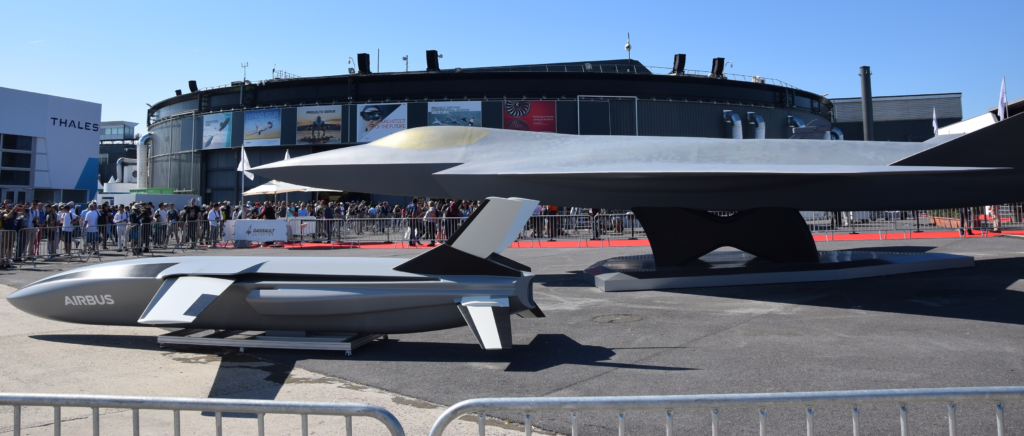
Are They 6th-Gen Already?
The Loyal Wingman concept bridges the gap between 5th-gen and 6th-gen technologies. While they’re primarily seen as force multipliers for current manned fighters, their autonomy, AI capabilities, and integration with networked warfare hint at the 6th-gen era, where manned and unmanned systems will work seamlessly across the entire battlespace.
A Lighthearted Take: Wingmen That Don’t Complain
Think of the Loyal Wingman as the ideal flying buddy—they don’t steal your airspace, don’t complain about formation flying, and are perfectly fine being sent into danger. The ultimate team players, Loyal Wingmen are reshaping the future of air combat with their silent yet deadly partnership.
In an era where air dominance is increasingly about who sees and strikes first, the Loyal Wingman ensures the skies are never lonely—but always lethal.
- Latest CPU’s Available Now – Amazon.com
- Get a NEW GPU Best Performance – AMAZON.com
- Upgrade RAM Here today – AMAZON.com
- Prebuilt PC Options – AMAZON.com
Author

Brendon McAliece (Aka Gunnie) is a military veteran with 23 years working on Jet Fighters, their weapons systems and ejection seat/module systems as well as munitions and R&D. Involved with flight simulation since the 1980s, he has flown all the major flight simulators over the years.
He is an Australian expat who has lived in Malaysia, UK, Saudi Arabia and more recently Thailand. He is a multi-lingual blogger who loves to share his life experiences here on LetsFlyVFR.com and DreamingGuitar.com, with his lifestyle and Travel experiences Blog plus his Dreaming Coffee website.
Learn More @
DreamingGuitar.com – DreamingCoffee.com – LetsFlyVFR.com
( HOME – BLOG – SHOP – ABOUT )
As an Amazon affiliate I may benefit from qualifying sales.









